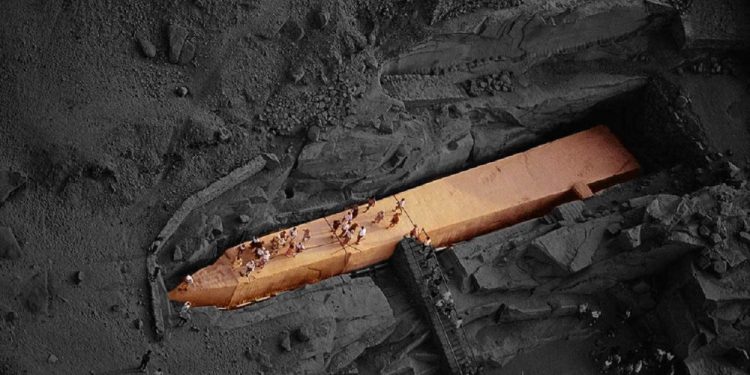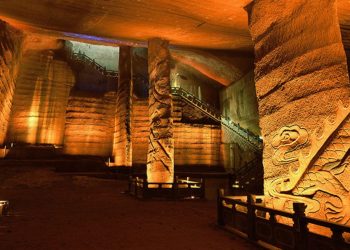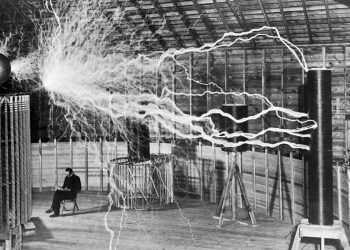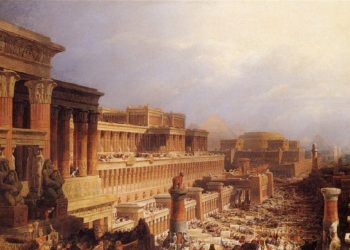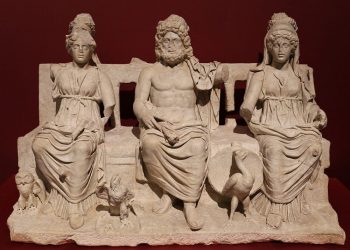Eye captivating obelisks built by ancient Egyptian kings still cause awe and wonder among Egyptologists, architects, and visiting tourists from around the world to this day.
However, many people are not entirely familiar with the purpose and meaning these phenomenal monuments are supposed to convey.
Today we’ll try and dig deeper into this puzzling mystery and bring to light some interesting facts about these ancient structures to better understand what obelisks meant to the ancient Egyptians and the world in general.
1. The word Obelisk can roughly be translated as “Skyscraper”
The term “Obelisk “comes from old Greek and usually refers to an elongated wooden piece used primarily as a cooking tool. The original Egyptian word for Obelisk was “tekhenu,” which translates to “piercing the skies,” or, in other words, “skyscraper. “
Modern Egyptians and other Arabs call them “masalla,” which means “needle.”
2. Creation story
To the ancient Egyptians, these sharp stone pillars represented the mount of creation at which the primordial (existing at/from the beginning) self-created god Atum stood while forming the world and other gods.
They are also depictions of the benu bird; the first creature said to have set life and seasons into motion and the creature that is said to signal the world’s end in the distant future when the universe will return to its dark, primordial state. With this in mind, there were also beliefs that obelisks symbolize rays of light from the sun god Ra.
3. Ancient Egyptians, Obelisks and Spiritual Energy
In later stages (around the fifteenth century BC), obelisks became the representation of deities themselves, inhabited by their spirit and giving immortality and protection in the afterlife in return for offerings.
Other motives for building them include; giving rise to peace, unity, harmony between heaven and Earth, strength and health for rulers, etc. The pillar’s four sides are inscribed with hieroglyphic texts, usually communicating honor to religious or ruling figures.
4. Traces of ancient civilization
The earliest fully preserved obelisk dating to around 1900 BC belongs to king Sesostris and is located in Heliopolis, Cairo, not very far from Giza’s imposing pyramids.
Today, we know that ancient Egyptians erected obelisks as far back as the 4th dynasty. That makes them some of the most ancient stone monuments ever found. Of course, there are many ancient temples and structures that predate obelisks, and one such example is Göbekli Tepe.
5. Egyptian stonemasonry
Egyptians usually used limestone and sandstone while building pyramids and temples. Obelisks, on the other hand—monolithic tapered pillars— were carved out of red granite rocks. The stonemasons carved them out of a single stone block in the quarry, after which the raw material was raised, shaped, transported, and then placed into position.
6. Egyptians used precious metals at the top of Obelisks
At the bottom, obelisks have a wider base, while at the top, they contain a small pyramidion usually made of precious metal such as gold or alloys made from both gold and silver. The question no one can answer is for what purpose these metals were placed atop the obelisks.
There are loads of speculation on the internet suggesting it may be some technology, but we don’t know the harsh fact. It may have been purely symbolic, of decorative.
7. Their construction is as mysterious as that of the pyramids
The building of these gigantic structures is almost as fascinating as the construction of the Egyptian pyramids. One of the obelisks, commissioned by Queen Hatshepsut (30 meters; 97 feet high), tells a pillar’s creation story.
The process involved in quarrying the raw material was lengthy. It was done by the most skilled stonemasons who had to carefully cut the stone from the bedrock, avoiding damaging it in the process.
The obelisks were then transported through the river Nile by ships specifically built for that purpose. Similar ships were used by the Romans, who transported many obelisks from Egypt to Rome.
Just as Egypt’s pyramid-building techniques are poorly documented, there’s not much about Obelisks we can find when looking at ancient Egyptian manuscripts.
We assume that to raise the massive stone pillars, the architects used ropes and ramps and an enormous workforce, slowly raising 200-300 ton heavy constructions into vertical positions.
However, archeological teams with support from building experts have failed to replicate this type’s successful building process.
We must, therefore, admit that ancient Egyptians used very ingenious mechanical solutions.
8. Obelisks were taken from Egypt
Today, there’s only a single ancient Egyptian obelisk still standing in its original place. It’s the Obelisk of Senusret from Heliopolis (1900s BC) alongside which a temple dedicated to the Egyptian sun god once stood.
Roman emperors relocated a significant portion of obelisks to Rome, where they stand to this day.
9. Heavy even by modern standards
The most interesting Obelisk in Rome is the one built by Thutmose III (around 1450 BC). It’s the tallest standing ancient Obelisk ever found, reaching a staggering height of 32 meters, 105 feet. Its base is 2,7 meters (6 feet 2 inches), and it weighs 230 metric tons.
There’s an even bigger obelisk called the “unfinished obelisk,” commissioned by Hatshepsut. This gigantic Obelisk was never raised and can still be found in situ in its original quarry in Aswan. During quarrying, the Obelisk cracked, and the stonemasons were forced to abandon it. This massive piece of rock weighs a staggering 1,200 tons.
10. Egyptian obelisks in New York City and London
In the 1800s, Egypt sent two identical obelisks as a gift to the United States and England. (each gifted obelisk measures around 70 feet (21,2 meters) in height.
The one in the United States is located in Central Park, NYC, and the second Obelisk is found in London. Both are known as Cleopatra’s needles, but they were commissioned by king Thutmose III in the 13th century BC and were carved as a dedication to King Ramses II.
Fun fact: Ramses II was the Egyptian ruler who built most of the currently known obelisks.
All sources and references are linked throughout the article. If you think something isn't right, please contact us.



